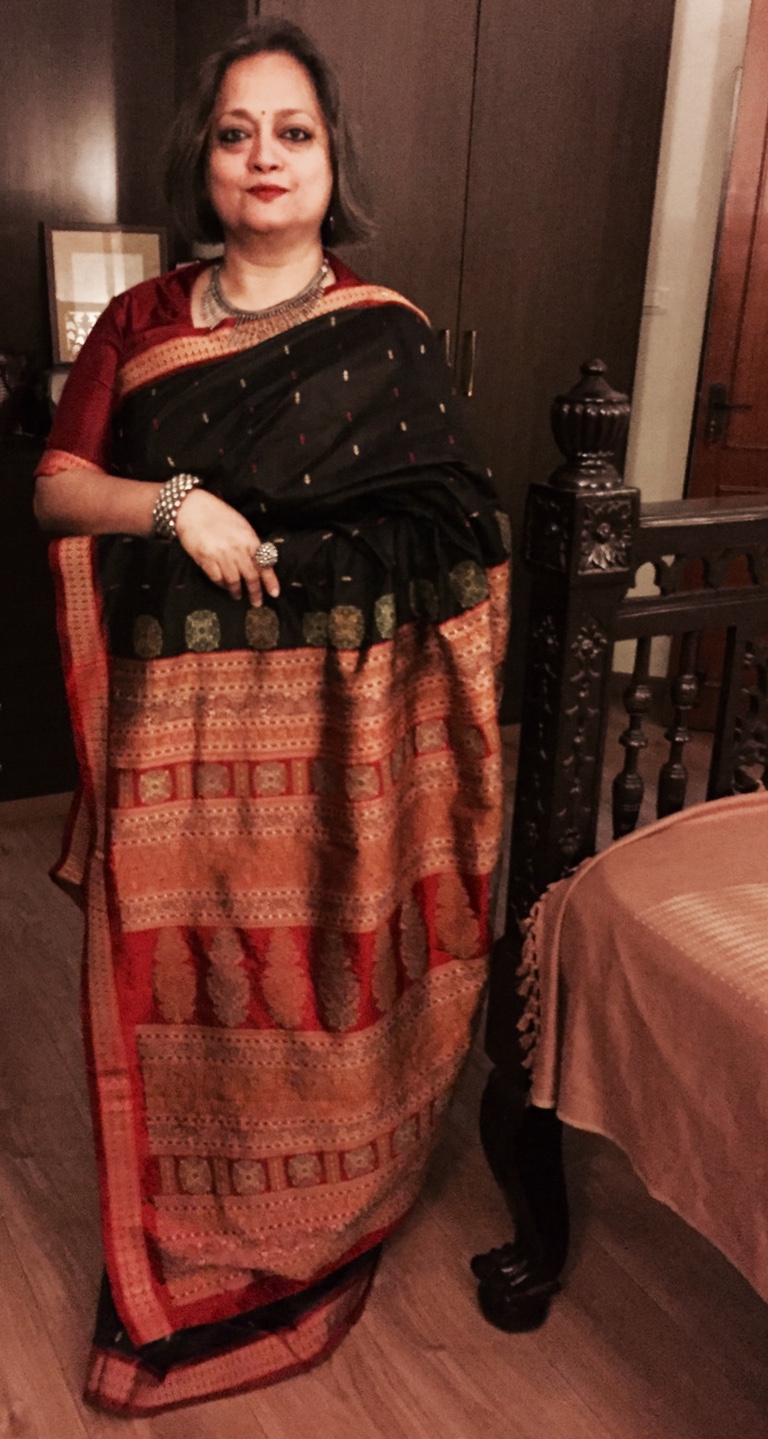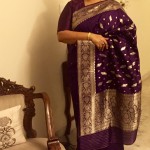Bewitching Bomkai
So what is it about Bomkais that hold me in their spell? Is it the masterful juxtapositioning of the irregular, unpredictable edges of the ikkat weave (almost jumping out at you as it were!) intermingled with intricate, studied, measured threadwork? Or is it the use of dramatic colour contrasts in the body and borders?
Produced by the Bhulia community in Bomkai village in the Ganjam district of Orissa, they are also known as Sonepur sarees.
The motifs on a Bomkai, like countless other traditional weaves from around our country, are inspired by nature and tribal art. They include karela (bitter gourd), the atasi flower, the kanthi phul (small flower), maacchi (fly), rui maacch (carp fish – a symbol of success and affluence), koincha (tortoise), padma (lotus), mayura (peacock), and chorai (bird). The sarees feature border motifs too that are inspired by the art of the indigenous peoples of Orissa. The weaving of a Bomkai sari follows the tie and dye method and has uniquely designed `bandha` or ties. The Bomkai sari uses the jala technique.
This is a 16-year-old treasure I wore to a dinner to celebrate a friend’s son’s wedding. My Bomkai has fish butas all over it and rudrakshas along the border.
I am flanked by two very dear, very old friends, Nayana Kamath and Swathi Reddy. One wears a mithai pink soft Bandhani silk with Benarasi borders and pallu. And the other is in a lustrous grey tussar set off by a maroon and ivory pochampally blouse highlighted by kantha work! Ah, the sheer mindboggling variety of fabrics and weaves our country has to offer.

